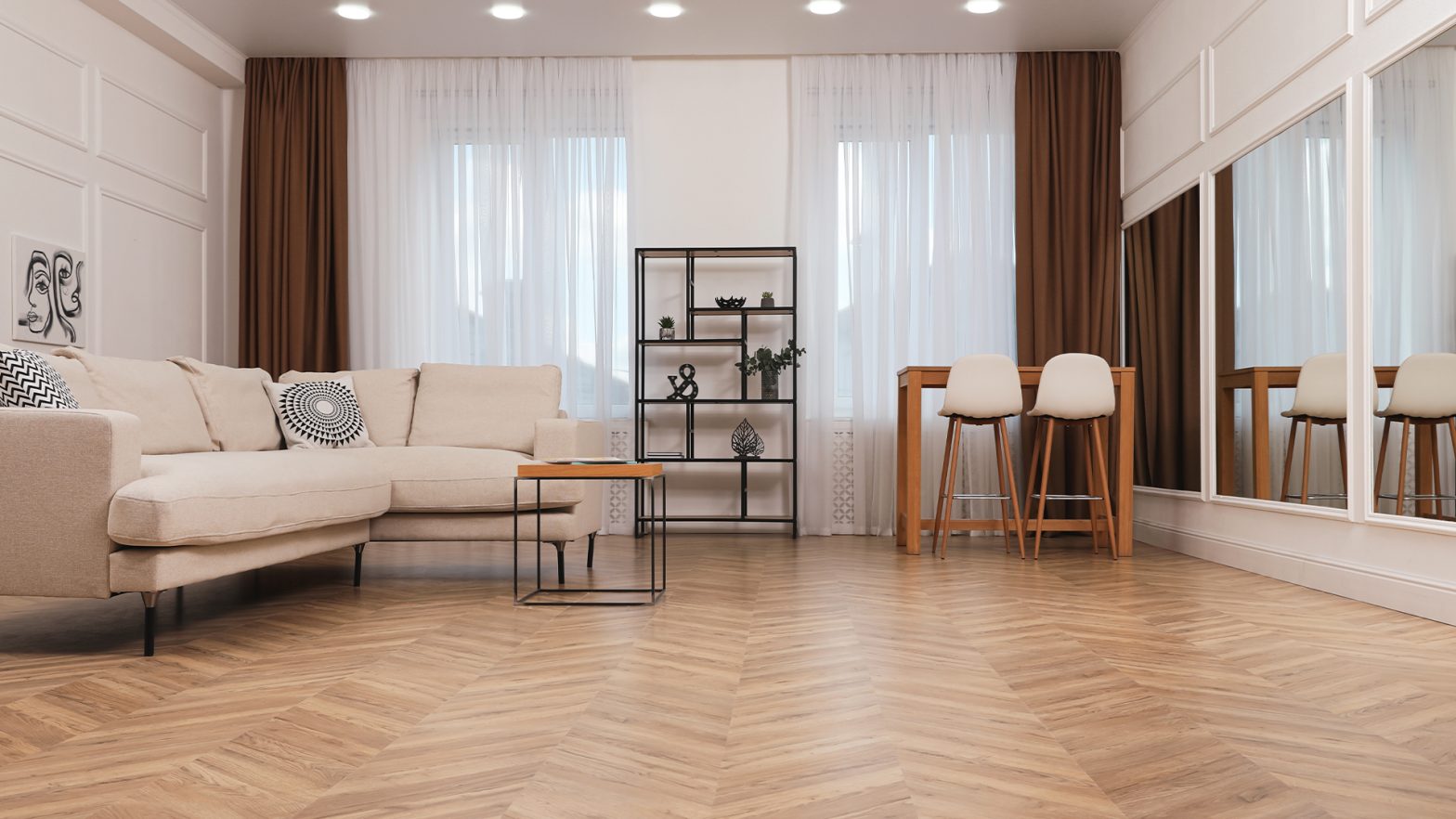
In the modern world, many homeowners are opting for the installation of vinyl flooring instead of other materials. Vinyl flooring is not only affordable, but it is also water-resistant, which makes it the ideal choice for installing in kitchens and bathrooms. Vinyl is a great, long-lasting option compared to most other flooring options flooring as it does not discolour or rot if it comes in contact with water.
If you’re considering updating the floors in your home, you may want to consider vinyl flooring. Flooring expert Christian Roberts at MyJobQuote.co.uk has created this guide highlighting the benefits of vinyl flooring, along with some information on how you can lay vinyl flooring yourself as a DIY installation.
What Are the Benefits of Vinyl Flooring?
Vinyl flooring is very durable and can stand up well in heavy foot traffic. This means that it is perfect for a lot of different settings in the home. Whether it’s the kitchen, the hallway, or the bathroom, vinyl flooring can hold up well while also looking great.
Additionally, vinyl flooring is noise-reducing and is comfortable under the foot, which can be an important factor to consider if you have children or pets.
It is also a lot less expensive than a lot of other flooring options, so it’s great if you’re looking to update your flooring, but you’re on a tight budget. Vinyl flooring is a great investment due to its durability.
Plus, it is easy to install and maintain. Vinyl flooring comes in a wide range of patterns and colours to match all aesthetics. In many cases, you can easily install vinyl flooring yourself as a DIY project.
Things to Consider Before Laying Vinyl Flooring
Before you choose to install vinyl flooring, you should consider researching all of the different types of vinyl flooring that you can buy. Typically, vinyl flooring is one of the best cost-effective flooring options that you can choose. However, since there are so many different styles for you to choose from, you should always do your research and compare the pros and cons of different types.
The second thing that you should consider is the ease of installation. Vinyl flooring is generally a lot easier and more comfortable to install compared to other flooring options. It’s a brilliant option for those who are looking to lay a new floor as a DIY job.
Vinyl is very strong and durable, and it is also stain and water-resistant, making it the perfect option for laying in kitchens and bathrooms. You will also need to consider the design of your flooring as there is such a huge range of patterns and colours to choose from.
Another thing that is worth considering before you install vinyl flooring is that a tradesperson is likely to charge by the hour. This is important to remember as it can affect the overall cost of your home improvements. Always be sure to budget carefully for your flooring materials as well as consider the cost of a tradesperson’s labour. This makes it easier to avoid any unexpected charges.
How Do You Install Vinyl Flooring DIY?
It is possible to install vinyl flooring yourself. However, for the best results, you should seek guidance or assistance from a trained expert. There are many things to consider before you carry out the installation process yourself. Always be sure to educate yourself first.
As with any home installation, vinyl flooring can be tricky to install yourself if you are not experienced in doing so. Ensure that you are confident in your ability to carry out the work thoroughly and effectively before you attempt to install vinyl flooring yourself.
Below is a guide on how to install vinyl sheet flooring yourself:
Step 1 – A minimum of 48 hours before you install the roll of vinyl, you should put the product in the room where it will be installed. This is so that the material has enough time to adjust properly to the temperature of the room. Giving the vinyl this essential adjustment time prevents it from becoming brittle when laid.
Step 2 – Begin by unrolling your vinyl flooring and placing the longest edge of the sheet against the longest clear wall. Leave a 25mm gap between the flooring and the skirting. Then, scribe the flooring to outline the skirting into the vinyl and finish this step by cutting the sheet with scissors or a knife.
Step 3 – Cut a triangular-shaped notch at each of the internal corners of the vinyl sheet. This allows the material to lay perfectly flat for the duration of the installation. This cut should be made within the excess vinyl that you allowed for when measuring.
Step 4 – Press the vinyl into the spacing between the floor and the skirting board with a chisel to create a neat crease. You can hold a ruler or a metal straightedge along the ridge and then cut it carefully with scissors or a builder’s knife.
Step 5 – Once you have laid the entire vinyl sheet and you are happy with its appearance, lift the edges and corners and apply some professional vinyl adhesive or some double-sided tape underneath. Finally, pressure must be applied to these areas to ensure that the material is securely sealed to the floor.
Final Thoughts
As you can see, vinyl flooring is a very beneficial option in modern homes and can be used in many different settings. With so many different patterns and styles to choose from, it’s easy to find a type of vinyl flooring that suits your home well.































